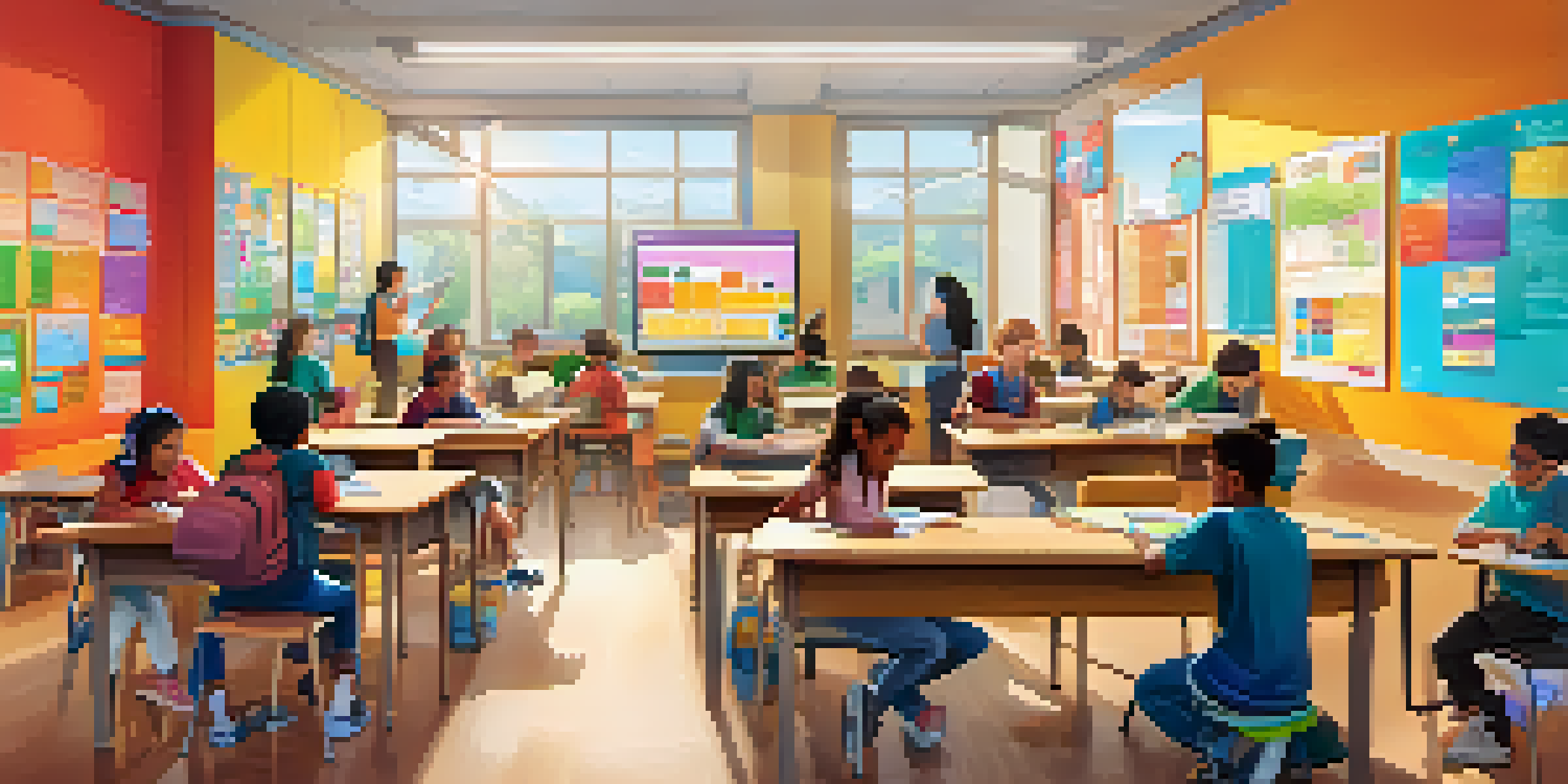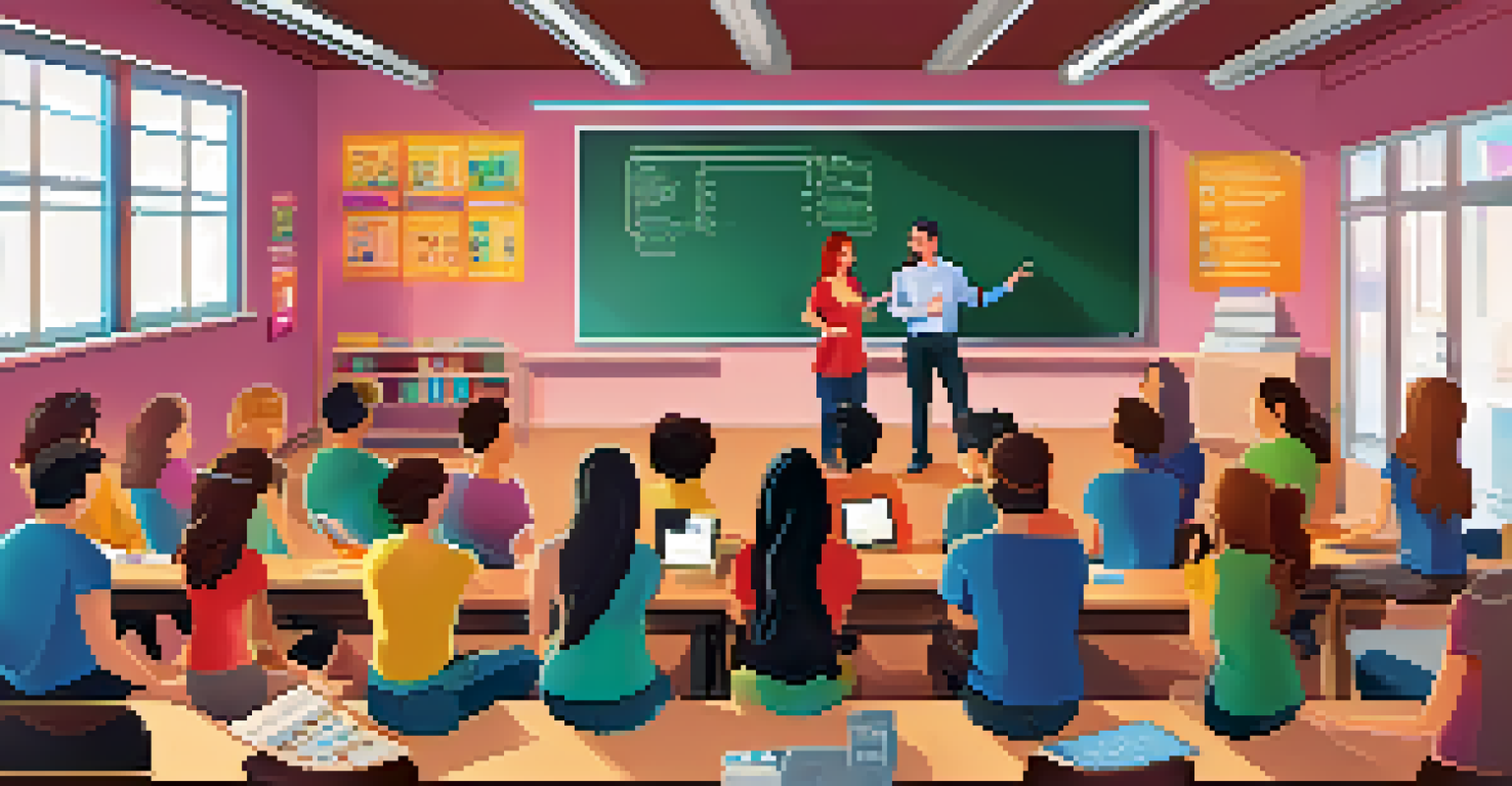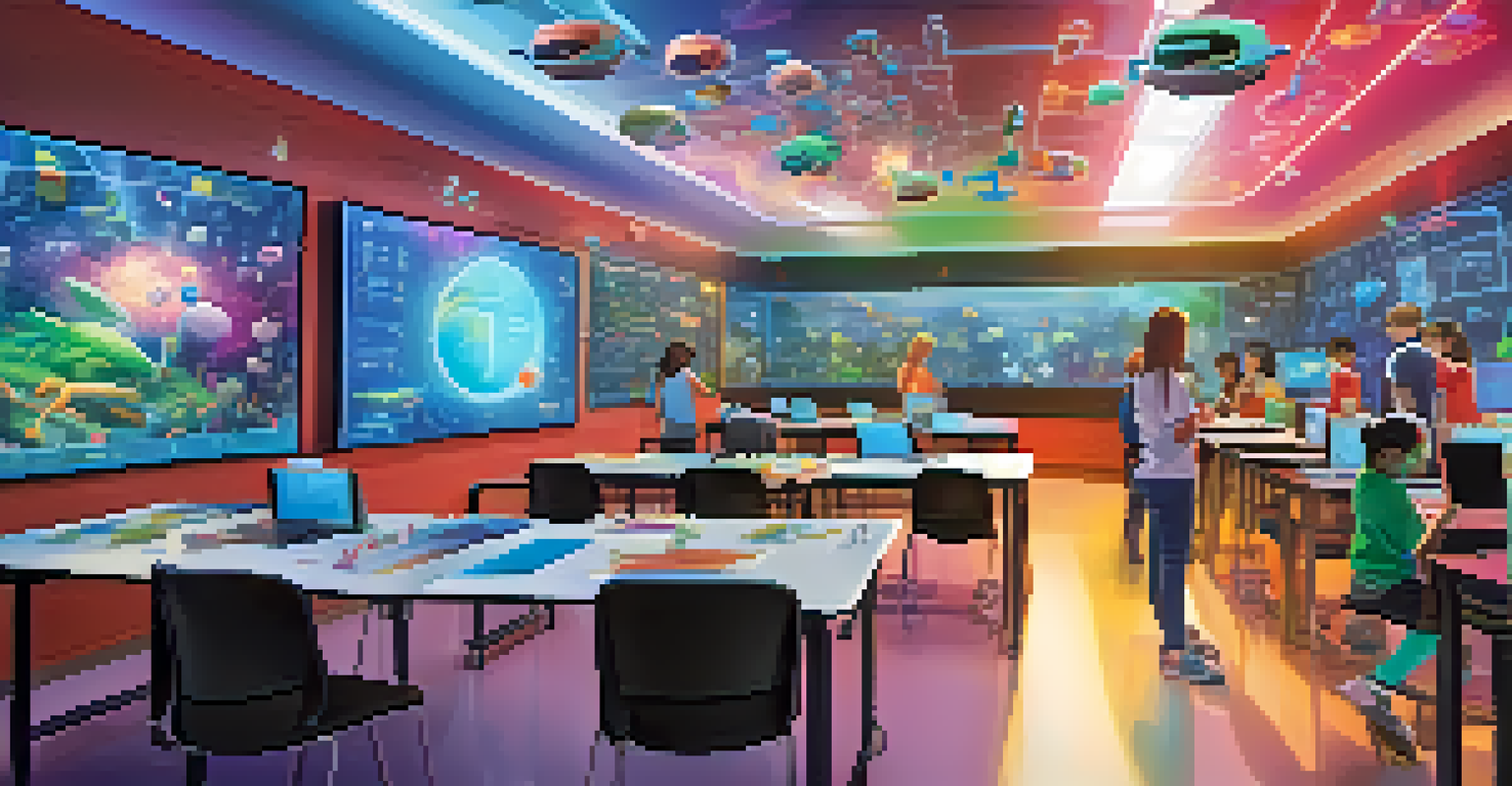Using Gamification to Enhance Education in NYC Schools

What is Gamification and Why Does it Matter?
Gamification involves incorporating game-like elements into non-game contexts, such as education. This approach can inspire students by making learning more interactive and enjoyable. By using points, badges, or leaderboards, educators can tap into students' intrinsic motivation, encouraging them to engage more deeply with their studies.
Games can never be a substitute for education, but they can be a powerful tool to engage students in the learning process.
For example, a math class might use a point system where students earn rewards for completing assignments or helping peers. This not only fosters a competitive spirit but also builds community and collaboration. In a city as dynamic as New York, where student engagement is critical, gamification can be a game-changer.
Ultimately, gamification is about transforming traditional education into an experience that resonates with students, making learning feel less like a chore and more like an adventure.
The Benefits of Gamification in NYC Classrooms
Integrating gamification in classrooms offers numerous benefits, such as increased motivation and improved retention of information. Students are more likely to stay engaged when they feel they are part of a game, leading to better academic performance. Gamification can also cater to different learning styles, ensuring that all students can thrive.

Additionally, NYC schools can harness gamification to address achievement gaps. By making learning more accessible and enjoyable, students who might struggle with traditional methods can find their footing and excel. For instance, using interactive platforms allows students to progress at their own pace, making education more personalized.
Gamification Boosts Student Engagement
Incorporating game-like elements in education makes learning more interactive and motivates students to engage deeply with their studies.
Ultimately, the benefits of gamification extend beyond the classroom, fostering skills like teamwork, problem-solving, and resilience that students can carry into their futures.
Real-Life Examples of Gamification in NYC Education
Several NYC schools have successfully implemented gamification techniques to enhance their educational offerings. For example, Quest to Learn is a school focused on game-based learning, where students navigate challenges and complete quests to master various subjects. This innovative approach has shown promising results in both engagement and comprehension.
Gamification is not about gaming; it’s about creating an engaging experience that enhances learning.
Another example is the use of platforms like Kahoot!, where teachers can create quizzes that feel more like games. Students often express excitement about competing with their classmates to see who can answer questions the fastest. This fun, interactive format can significantly boost participation and enthusiasm for learning.
These real-life implementations demonstrate that gamification is not just a theoretical concept but a practical strategy that NYC educators are successfully using to inspire their students.
Challenges of Implementing Gamification in Schools
While the benefits of gamification are clear, there are challenges that educators face when implementing these strategies. One major hurdle is the need for proper training and resources. Teachers must feel comfortable using technology and understand how to integrate game elements effectively into their lesson plans.
Furthermore, there can be a resistance from parents or administrators who may view gamification as trivializing education. It is essential to communicate the educational value and potential of gamification to gain broader support within the school community. This dialogue can help alleviate concerns and foster a collaborative environment.
Personalized Learning Through Games
Gamification caters to different learning styles, allowing students to progress at their own pace and making education more accessible.
Despite these challenges, the potential rewards of gamification in education far outweigh the obstacles, especially when it comes to engaging NYC's diverse student population.
The Role of Technology in Gamifying Education
Technology plays a crucial role in the successful integration of gamification in education. Tools such as mobile apps, online platforms, and interactive software facilitate game-based learning experiences. This technology not only makes learning more engaging but also allows for real-time feedback, helping students understand their progress.
For instance, platforms like Classcraft enable educators to create immersive learning experiences where students can earn points and level up based on their academic efforts and behavior. This encourages students to take ownership of their learning and fosters a sense of achievement.
As technology continues to evolve, so too will the opportunities for gamification in education, making it an exciting area for both students and teachers in NYC.
How to Get Started with Gamification in Your Classroom
Getting started with gamification doesn't have to be overwhelming. Teachers can begin by identifying specific learning objectives and considering how game elements can enhance those goals. Simple strategies, such as introducing a point system for participation or creating a class leaderboard, can be effective starting points.
Additionally, collaborating with colleagues can lead to innovative ideas and shared resources. Teachers can brainstorm ways to integrate gamification across subjects, creating a cohesive learning experience that resonates with students. It’s about fostering a culture of creativity and experimentation.
Technology Enhances Gamified Learning
The use of technology, such as apps and online platforms, facilitates immersive and engaging learning experiences for students.
As educators take these initial steps, they can gradually expand their gamification efforts, tailoring their approach based on what resonates most with their students.
The Future of Gamification in NYC Education
The future of gamification in NYC education looks bright as more schools recognize its potential to transform learning. With advancements in technology and the increasing demand for engaging educational experiences, gamification is likely to become a standard practice in many classrooms. This evolution can pave the way for more innovative teaching methods and diverse learning environments.
As educators continue to experiment with gamification, they will discover new ways to inspire students and cultivate a passion for learning. The possibility of creating fully immersive educational experiences, where students can learn in virtual worlds or through interactive simulations, is on the horizon.

In conclusion, as NYC schools embrace gamification, they not only enhance education but also prepare students for a future where adaptability and creativity are key.